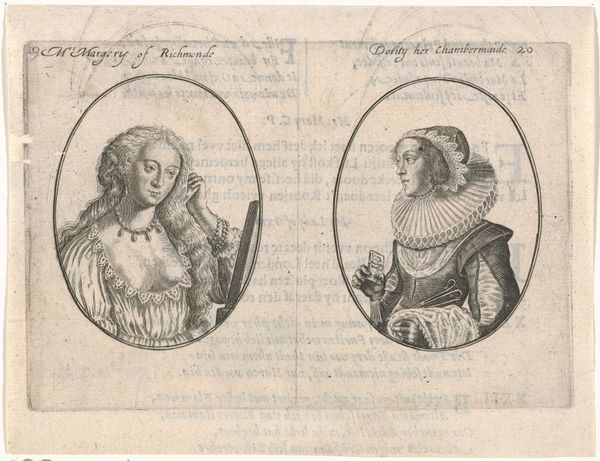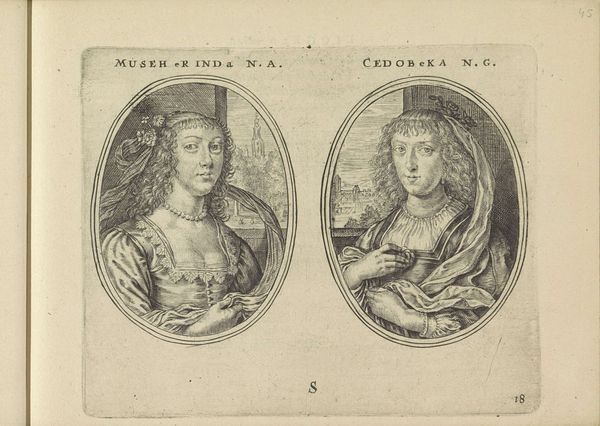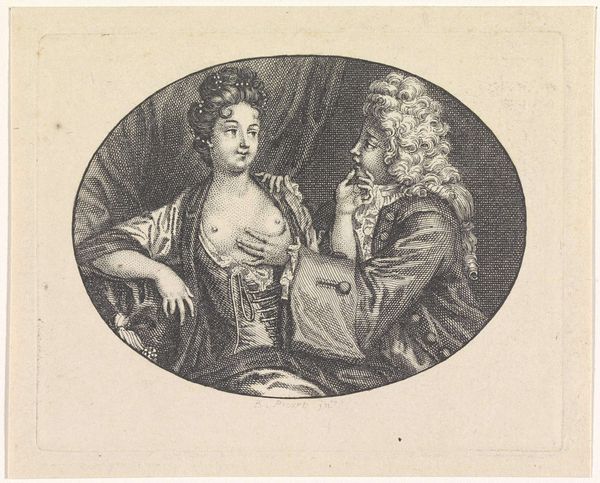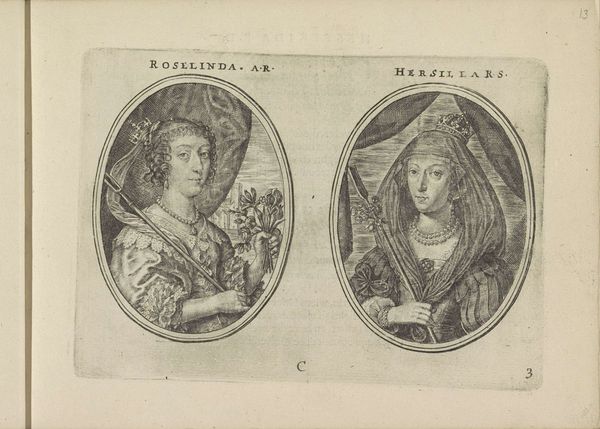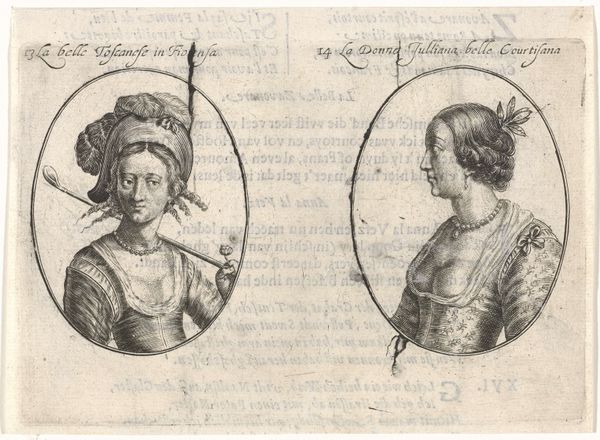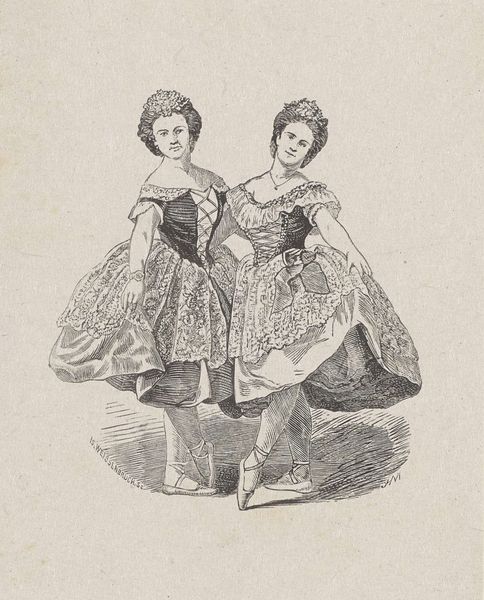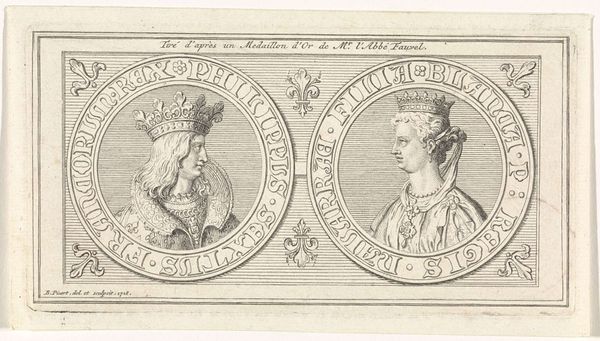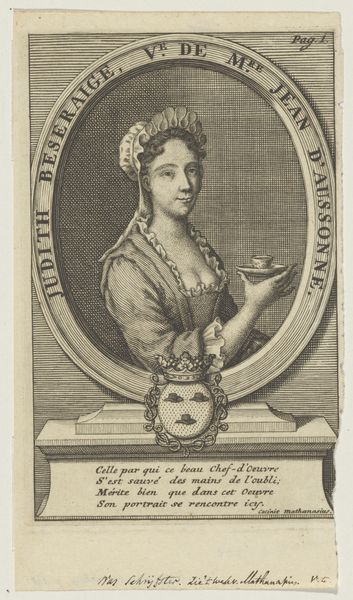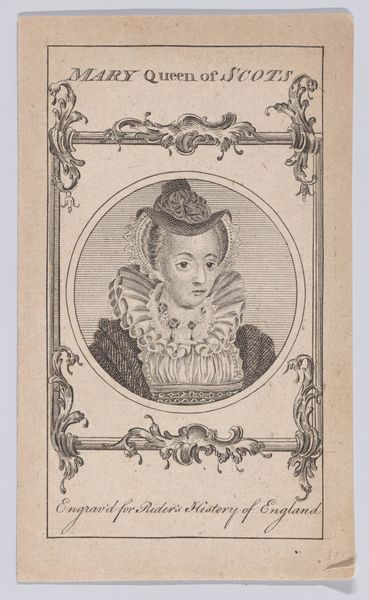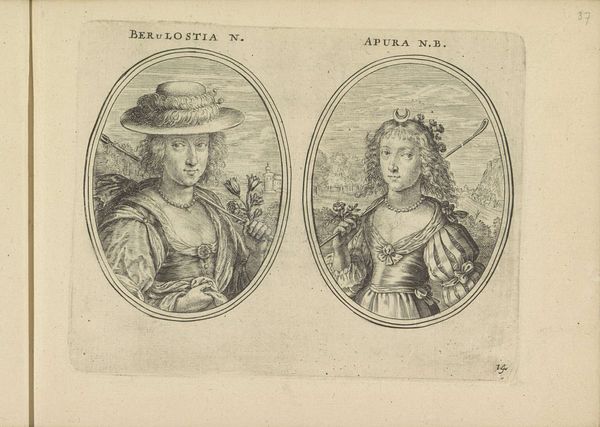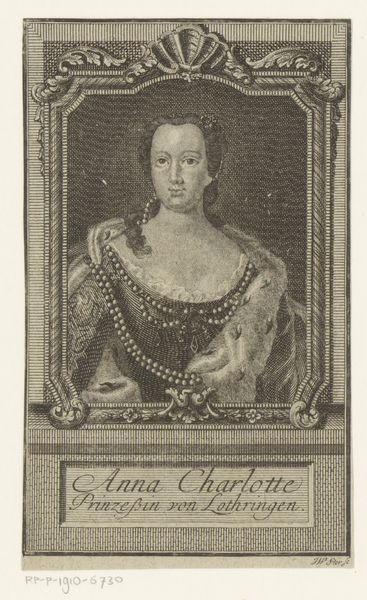
George de II. / Koning van Engeland / En / Wilhelmina Charlotta, / Zijne gemalinne 1725 - 1780
0:00
0:00
johannesiikannewet
Rijksmuseum
print, engraving
#
portrait
# print
#
pen illustration
#
pen sketch
#
old engraving style
#
line
#
history-painting
#
engraving
Dimensions: height 315 mm, width 415 mm
Copyright: Rijks Museum: Open Domain
Curator: This print, created sometime between 1725 and 1780, is titled "George de II. / Koning van Engeland / En / Wilhelmina Charlotta, / Zijne gemalinne." It's an engraving by Johannes (II) Kannewet. Editor: My initial feeling? It’s quite formal but has this wonderfully quirky border that feels a bit… untamed. The portraits themselves are stately, of course, but that foliage looping around them has a wild energy, almost as if nature itself is holding them in its grasp. Curator: Precisely. Consider the historical context: depictions of royalty were carefully managed to project power. The detailed rendering emphasizes their status, their divine right, and the importance of succession. The engraver uses line work meticulously, conveying not just likeness but also authority. Editor: It’s almost comical, the way the weight of their positions seems to drag their faces downward, haha! Look at their serious eyes as if thinking of the problems of ruling countries. It would be wonderful to see a modern, loose rendering with a lighter expression on their faces. Curator: But that's where we must pause, to interpret within the appropriate socio-historical landscape of power. These images also functioned as tools for building a nation’s identity. Consider, for example, how the portrayal of Wilhelmina Charlotta sought to reinforce gendered expectations, placing her firmly within the roles of wife and Queen consort. The artwork underscores that relationship within an emerging British national identity. Editor: The choice of engraving, though, lends a certain flatness, which contrasts that heavy regality. But somehow I’m charmed by its almost amateur quality. It lends character and helps make the figures much more familiar. Perhaps that very tension contributes to the print's enduring fascination. Curator: Indeed. This piece invites us to explore questions of representation, of power dynamics, and of the evolving notions of monarchy and gender within early modern Europe. Editor: Exactly. It gives a fascinating insight not just to the couple and their life but also a view into how normal folks might have viewed or wanted to view them at the time, right? It’s wonderful!
Comments
No comments
Be the first to comment and join the conversation on the ultimate creative platform.


